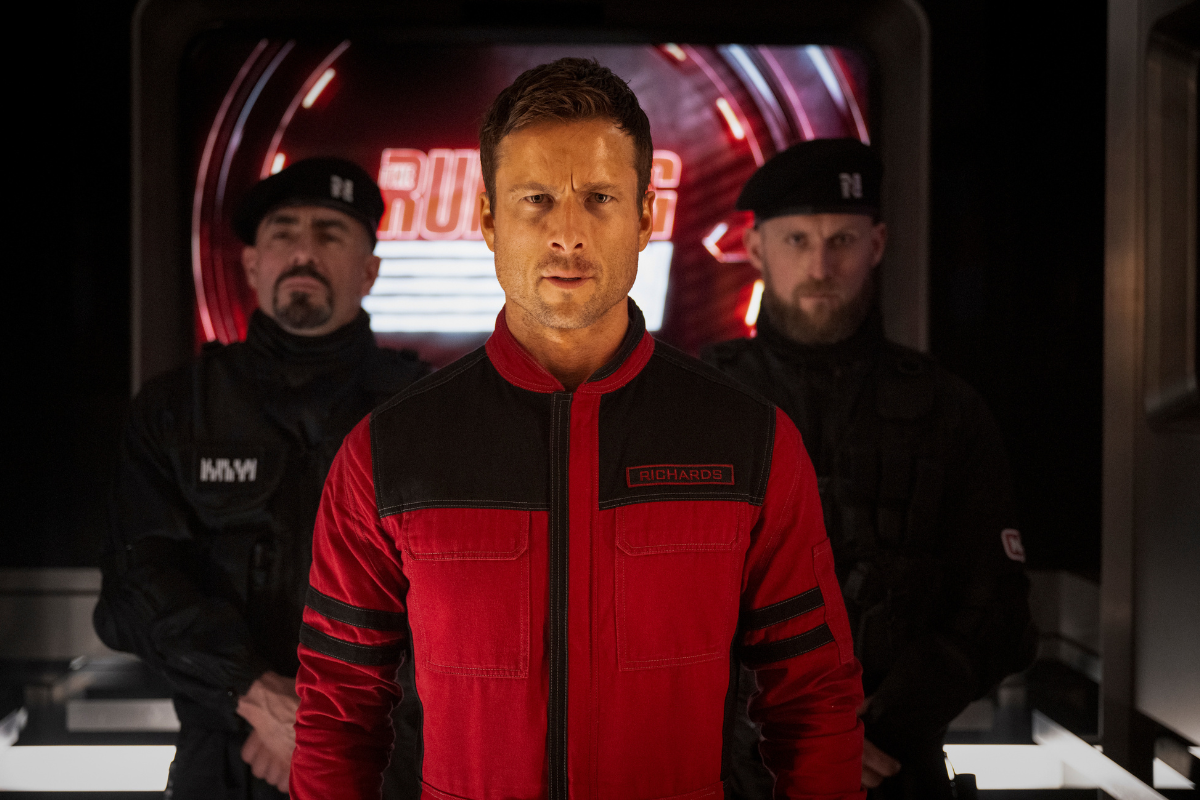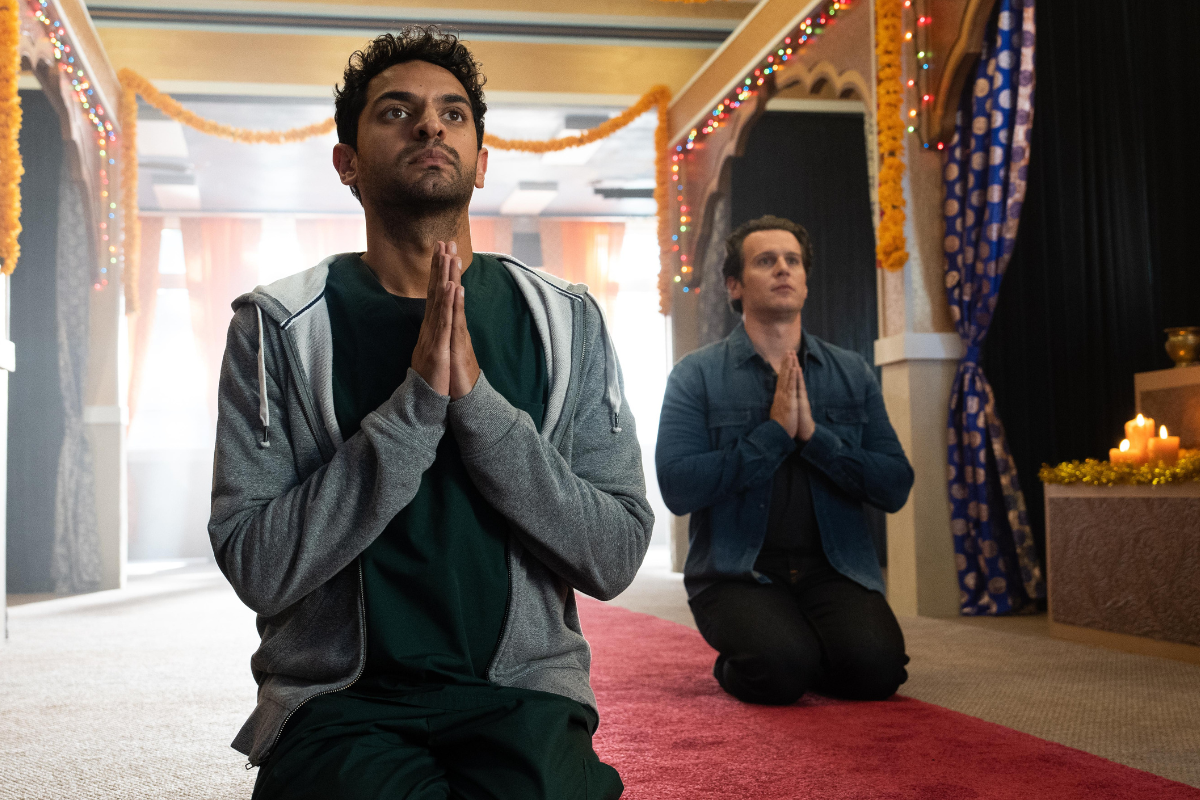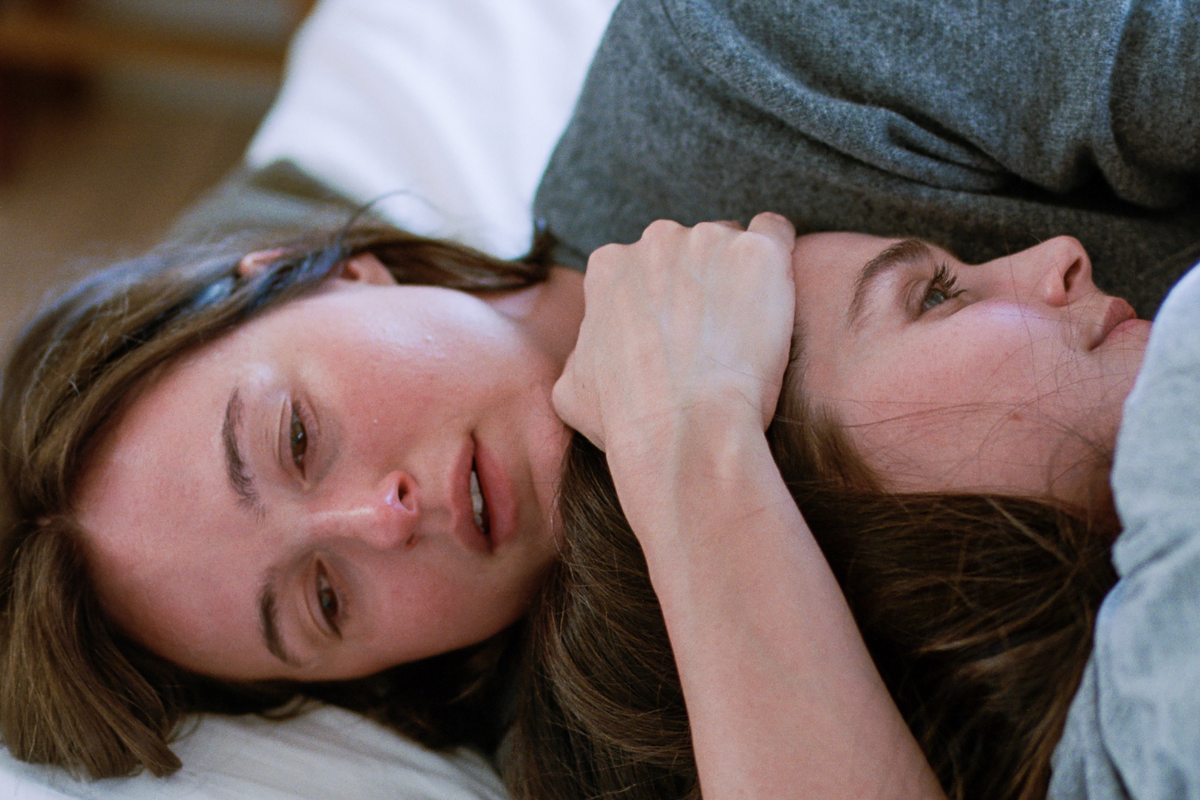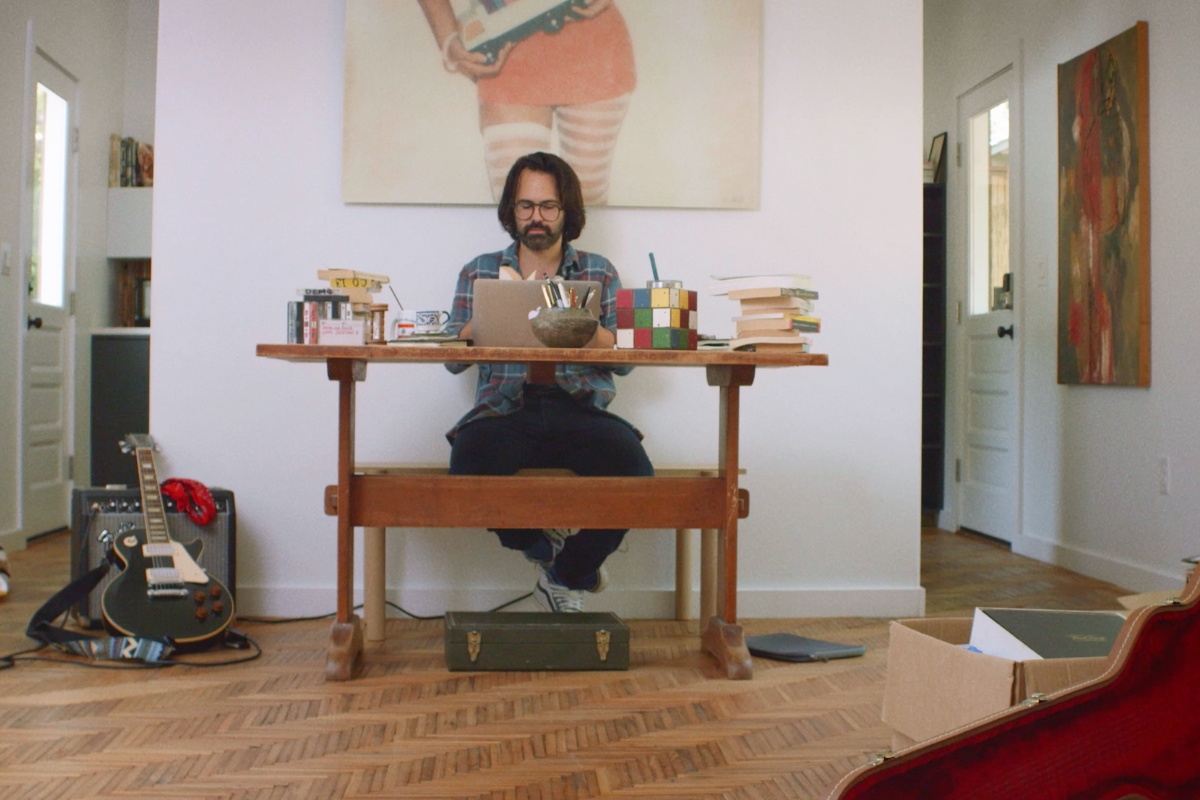Tony Gilroy Checks in after 10 Episodes of ‘Andor’
Earlier this year, Gilroy spoke to Script about the first few episodes, but asked again to discuss the series up to its 10th episode and impart his knowledge to the screenwriters of the world.
Andor, the latest series in the quiver of Star Wars shows has taken the writing world by storm. With a sharp sense of good writing that leaves as much to the imagination as it punches to the gut, Tony Gilroy has overseen an incredible achievement in storytelling. It’s almost secondary that it’s for the largest space film franchise of all time. Earlier this year, Gilroy spoke to Script about the first few episodes, but asked again to discuss the series up to its 10th episode and impart his knowledge to the screenwriters of the world.
For those unfamiliar with Tony Gilroy, Gilroy has had a diverse career as a screenwriter. His first credit is for the 1992 sports comedy classic The Cutting Edge and he’s adapted and directed movies in the Jason Bourne series and he’s perhaps best known for the writing and directing excellence he brought to the table in 2007’s Michael Clayton. With Andor, he’s perfected the art of quality storytelling in weekly installments and we talked to him about that process and what screenwriters these days should know.
Andor tells the story of Cassian Andor, an angry young man learning to be a rebel, played by Diego Luna who is reprising his role from Rogue One: A Star Wars Story. The show has taken him from his earliest days, stranded on the planet Kenari, all the way to his days boosting Imperial tech to sell to the Rebels. Now, as the show has progressed he’s getting deeper and deeper into the world of the Rebellion, even as he runs from it as far as he can. Other story threads follow the charismatic leader Mon Mothma, the brutal Imperial system through the lens of Dedra Meero in the Imperial Security Bureau, and others. Gilroy and his team are able to twist them into fascinating juxtapositions that tell, perhaps, the most mature story we’ve seen in Star Wars.
Script Magazine: You’re the showrunner and dealing with the writing, but there are other credited writers for the episodes. As the showrunner, how much is your hand in the process?
Tony Gilroy: I start it, then they come in. We did a five-day writers' room the first season, we did a seven-day writers’ room for the second season. Then everybody goes off and we divvy up the episodes and they do them.
They're all very busy, they're very expensive. Then there's another two years. We talk a lot, we're good friends. I saw this on [House of] Cards, I've seen this [elsewhere]. In the end, it has to come out of one place, so divvying up the provenance and this and that, and who said this, and where does that line come from, or whatever is almost impossible to do, but the buck stops here. It has to come out eventually. It has to come out of this office in the end.
Script Magazine: One of the things in the show that’s really struck me is the use of juxtaposition in the production design. For example, the ISB locations look similarly lit and feel as much like a prison as the prison sets. You get the impression that everyone's in a prison of their own making, and I'm wondering, with those production design decisions, how much of that is on the page and how much of that is in the showrunning where you're dealing with production designers?
Tony Gilroy: Well, not to piss off Danny [Gilroy] and Beau [Willimon] or anybody. But my primary collaborator is Luke Hull, the production designer. Just as a microcosm, I'm working on something that has to be revamped for the next block that we’re shooting, and it is all site-specific and the person has to completely tear down and rewrite based on locations. I'm on the phone with Luke four or five times a day saying, “Man, I need a foyer, I need a security gate. Is there a thing there? Where can they hide the weapons? Where do I do the thing? What does the bodega look like? What does the travel agency look like? What is this?”
Design and writing are not separate on the show. When we did the writer's room the first time, by luck, we brought Luke in, and after he was there for two days, you're like, “Oh my God, how are we going to do this without him?”
The second time we did the writers, it was like Luke was baked in, Sanne Wohlenberg, our producer—who’s a freaking genius—was there, they're on the sidelines, they're in the room, they're not at the table, but they're right there listening to everything, so they're watching the show that they have to make and help make be built in front of them and saying, “Oh, we can't do that, we can't do that, we can't do this. I'm like, I don't know how to do that.” It is completely organic... I have my map of Ferrix up here that I drew, that I sent to Luke six months before we ever started. My crummy little cocktail napkin map with Ferrix, and it kinda looks like Ferrix in a way…
Script Magazine: For writers who don't have the benefit of a production designer, how can they pay attention to things like production design when they're writing?
Tony Gilroy: I've come completely around on the whole notion. I don't ever wanna hear anybody say that writers shouldn't be directing... You have to be directing. I'm not interested in reading anybody else’s scripts anymore [who] aren't directing the film that they're writing. You should be making a film and showing it to me on the page.
I used to half-believe that and I used to sort of say it, but this experience has led me to be completely... I've gone completely shied on this at this point.
You could see people annoyingly like “oh the tracking shot takes him here" and then they get micro instead of writing, they get into that, but you've gotta see it, it's gotta be real. You gotta build it.
I can't tell you how much time I spent sketching, how much time I spend drawing. My god, the amount of sketches... And I'm not good. But you know, there's... “What's the room look like? How’s it laid out? Where are they gonna walk? Oh my God, if the thing is here and this is here, that's there, and it's like, My God, can you see them from here.”
You're trying to make something real.
Script Magazine: The dialogue work is phenomenal on the show, and when we talked last time, we got to speak about how the dialogue is really what starts things for you, and I was wondering about the subtext that runs through everything.
There are a lot of people on the show who can't say what they mean because of the oppression, or the people listening, or that nobody's listening… but the work with the sub-text where you're implying more than you're stating and letting the audience sort of put that together, it reminds me of... I think Lawrence Kasdan is a really great writer at that, where he implies a lot more than he actually states. Or William Goldman does that, but I think it was Billy Wilder and Ernst Lubitsch who were like “give the audience two and two and let them come up with four” and that's really what Andor has done.
Can you talk about how you approach that as a writer of dialogue and how that's come out in this show? I'm thinking specifically like, the scene between Skeen and Andor in the fifth episode.
Tony Gilroy: The tattoo scene?
Script Magazine: Yeah.
Tony Gilroy: That's cool, that scene, I like that. I think it's two separate things that you're talking about, one is the plodding through dialogue, that's what I discovered, that's where I discovered—because I'd never been so intimately involved with other writers’ processes as I have been on this—between Bo and Danny and then Tom Bissel and [I] watch how people work, and I realized that my way of doing it is pretty unusual, and I keep thinking, “Oh, well…” but I keep being more and more confirmed that my way works for me and is good for me.
I literally...I get… everything… It's hard to describe. I'm doing something right now, I'm rebuilding this whole thing and people have to do stuff, and these are characters you don't know, and where do they get the guns and how do they know what they're supposed to do? And it's really important to plot.
But, if I get them talking to each other, all of a sudden the plot takes care of itself. All of a sudden, they're alive and they know that, “my God, of course they're gonna go do this” and this is what they do and this is what they don't know, and I'll cut it all down and trim it all down, but the essence of getting them talking has made things possible.
Now, quality of dialogue? I don't know. That's just a taste and ear and experience. I think for writers, I think that the best thing that can happen to you as a writer is to get to hear your stuff done as much as possible. The more you can hear it done, the better off you are, and because you just learn what you don't have to write—you learn how much the camera can do, you learn what the actors can do, so I think the more experience you get, the less you write, or you write tighter or you write less.
Directing made me a better writer. And now, I'm the beneficiary of knowing that everything- so much the time you're writing, you're like “some spec, who knows it'll ever happen.” You're kind of writing in the abstract, but the moment you're writing and you know that everything that comes out of your machine is going to be shot... That helps. That helps a lot. And knowing you have great actors that you can write for. The writing on the show got better as the actor as we started casting because it was just like, "Oh my God, look what Anton Lesser is doing for me as Partagaz." I mean, how much plot is that guy carrying around and making it look like fun? It's incredible. Imagine that hands of a lesser actor—it’s deadly.
Script Magazine: What have you learned from the other writers on the show?
Tony Gilroy: I do from Beau, I worked on Cards for a couple of years, and watching Beau…I didn't go to the writers' room, I only went there a couple of times—but watching Beau at the white board, he is just never happy with it if he's standing up at the white board and with a marker and blocking stuff out and he's just... so energetic and classroomy and upfront and pushing forward.
Danny and I have a very similar process, I think... I don't think he writes as much dialogue as I do to bang his way in, but... What have I learned? It's just a general level of obsession that I'm just surrounded by so many brilliantly obsessive people, you can't do this without it. Everybody in every department. And after a while, you start to think that that's normal—everybody's a nut, everybody's crazy. Nick Britell [Composer] and John Gilroy [Editor] and Mohen Leo [Visual Effects Supervisor] and Luke [Hull, Production Designer]. It's a collection of obsessive people, and if you give them enough money on you and you hang together and you don't fight, and you serve a common purpose, you can really, really be obsessive together.
Script Magazine: What inspirations do you go to when you're building your taste as a writer? Lucas obviously talked a lot about Kurosawa and Flash Gordon. The last time we talked, we talked about that vein of Paddy Chayefsky and Sidney Lumet in some of the dialogue scenes. But for younger writers, building their taste, where do they go? For you, what are those cinematic keystones that you're going back to, that really help fuel your writing?
Tony Gilroy: At the very most fundamental, this wins or loses by being an adventure story, that's what has to be remembered all the time. It has to be a ripping yarn. It has to be a freaking incredible adventure story about what happens next, and it has to be… That's its baseline thing. So I think that the places where people have taken... And this is not like movie writing, now, this is this new thing... The canvas is so wide, the landscape is so big, I can't really speak about the taste of the dialogue and the quality of that, 'cause we're just going for real all the time. Just trying to be real. So the people that are real and that we all have scenes that are more real than not, so... Yeah, all the people that you mentioned. Absolutely, and all of that, but trying to think of something…
A show that really showed me what was possible, I thought Babylon Berlin, the ambition of Babylon Berlin, those first 16 episodes… I was just astonished by the scale of it, and the thrill of it, and the novelty of it, and how deep it was, and how the fact that they were able to afford it, and how the efficiencies were there, and yet it was an amazing adventure story. That was kind of a benchmark for me like, Man, we have to... We have to be that. I wanna be that ambitious with the show, I wanna do something that tries to do that.
That doesn't really answer your question, you're talking about a taste touchstone, but I'm talking more about scale and can it be done? Should we dare to be this big? That was the thing I saw that I was like, “Oh my God, how do you do that? How did Tom Tykwer do that?” Did you like that show? Did you see that show?
Script Magazine: I haven't seen it, but it's going on my list now.
Tony Gilroy: Oh my God. I think he did 16 episodes. I think it's two rounds of eight. And they did it cheap. It doesn't look cheap at all. I see shows on now, I mean there's some shows of people don't watch those things that are on now that I'm just like, “Wow, look at this... I don't know.” But taste-wise, I mean, all the people you mentioned, we can go down on my same old list, Robert Stone and Alan Pakula and Paddy Chayefsky—the whole list of all the people that we know and love.
Script Magazine: Dave Filoni told me once that in order to talk to George Lucas, like everything needed a reference into classic film somewhere—that was sort of how he understood the world. Is that something that happens working on Andor?
Tony Gilroy : As a starting point, maybe? But I'm sure there's a bunch of places we go.
We all make movie references all the time, but that isn't unique to this show, that's been on everything I'd ever been on you in whatever show you’re doing, “It would be great if, you know what they did and so? Let's do that. Let's do better. Let's do this, let's do that. Let's turn that upside down.” So, yeah... Not more or less than anything else.
We're doing something in season two that we're prepping that's very complicated. And there's a movie that just came out over the summer, in fact, it came out as a trailer and then... And everybody on this thing was like buzzing like, “Oh my God, look at that, look how they did this thing,” and it's like... it goes like a virus to the stunt department, and the visual effects department is like, “Hey man, how do they do this?” And then “God, did you see it?” And it's a pass around thing, so people are, you know... But I find that's true on all movies, I've never worked on a movie that people weren't trying to say, “Remember this, let's do that, or they did that before,” so...yeah, movie literacy is really helpful.
Script Magazine: It seems like on Andor—and maybe this is just because it's got the shared DNA of what George had done on Star Wars—but it feels like there's those elements of THX-1138 on the show.
Tony Gilroy: You know, we didn't really... When we built the prison, when it came around that day, when someone said electric floors and we sort of spent the whole day like, “What does that mean? And oh my God, then there's rubber boots and what do they do? And how would you break out and what would it be like, and what would they be doing there, and what do they make? And how do they make it? And how many would it be?” And all the rest of that shit... By the time you get the it done, then we're back... Then Luke Hull is putting a mood board together, and we have all our mood boards for the ISB, all the various shades of white...
Looking at The Conformist, there's a classic example, we have all these mood boards from The Conformist... Oh my God, 'cause there's all these great whites and all this really interesting marble and all this sort of proto-fascist architecture and what does that mean? In our mood boards, when he comes back to the prison, he pulled down some of The Conformist stuff, and THX was already in there as part of our whites for the ISB like “Wow. Oh my God, prison, look.” So it was a happy accident in that sense, and a pleasing one—it's very pleasing. That connection is really pleasing, that it’s George, but it wasn't something that we wanted, we didn't climb in that way, we found ourselves there.
Script Magazine: You're doing such a great job with the juxtaposition of storytelling, especially the episode “Nobody's Listening!” where you've got Cassian and Mon Mothma going through that same trouble like nobody's listening to us, but for him, it's a good thing and for her, it's a bad thing—really turning those things on each other and on their ears, it's just really fun writing to watch.
Tony Gilroy: We have so many balls in the air now, you'll see, if you ever write... I don't know if you've written any scripts that have a lot of characters in them, and every time you do it, it's just an agony in the beginning, 'cause you're like, “Oh my God, I gotta introduce all these people, and it's just so hard to get everybody started,” and you go back and forth and it takes forever to write the first 30 pages, you're trying to plot it out or whatever, but there comes a moment where later on when you're deep into it, where you realize you have so many places to go.
And you're like, “Look at all the things I have available to me. And I can go here and I can go there,” and all of a sudden it becomes a fun game at that point, and you start to look very smart, like you've connected everything, but really it's just the instinctive work of getting everything up in the air, it's like, “Oh, what about this what about this?” So we have a lot of... arrows, we have a lot of places we can go.
We're more limited now by which actors can we get for which episode. There's a lot of things that have to be based on scheduling and who's available and what we can do, but we have so many rolling we can always have someplace cool to go.
Script Magazine: There's something when I'm watching a really well-written movie, no matter how depressing that movie is, there's this glee that you can see behind the writers because they're putting it together so well, that's kind of the joy I have watching Andor. The same way I would with a Billy Wilder movie or something like that, where there's that craftsmanship behind it that feels like you're enjoying it even if it gets dreary.
Tony Gilroy: That is terribly, pleasing to hear. We had the time and we had this talent and we had the money, and we had enough crazy people around, as I said, to find our way. I think you’ll be pleased how we go, 'cause we're in control. We are in control of our story. And you'll see. I think you'll see that we're in control of what we're doing, and that is the...the feeling you get the audience of confidence that, after a certain amount of pages where they go, “OK, I trust the person is telling me the story, it's gonna be OK, I don't have to worry about it anymore.” And so I think we just have to do it all over again. One more time.
Script Magazine: I wish you the best of luck with that. I hope we get to talk after the finale.
Tony Gilroy: Thank you very much those were kind words indeed.
Andor airs on Wednesdays on Disney+.
Bryan Young is an award-winning filmmaker, journalist, and author. He's written and produced documentary and narrative feature films and has published multiple novels and a non-fiction book. He's written for Huffington Post, Syfy, /Film, and others. He's also done work in the Star Wars and Robotech universes. You can reach him on Twitter @Swankmotron or by visiting his website: swankmotron.com.







